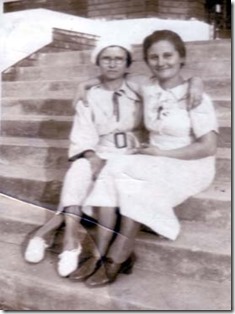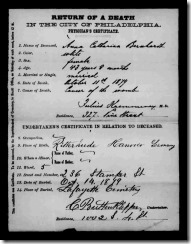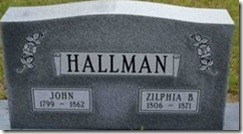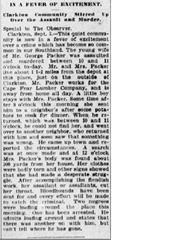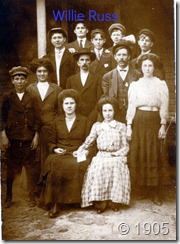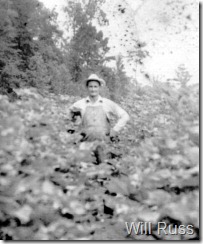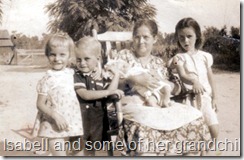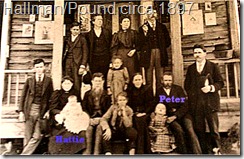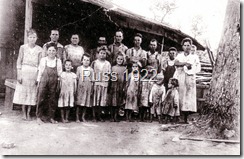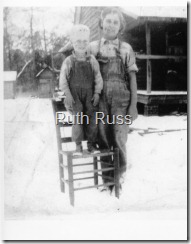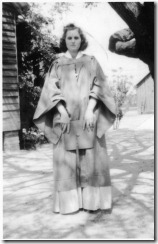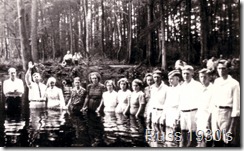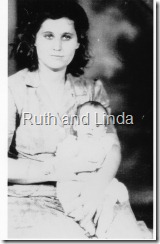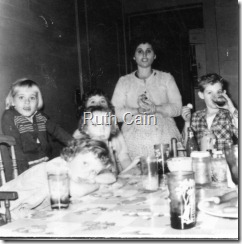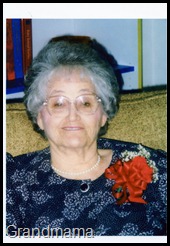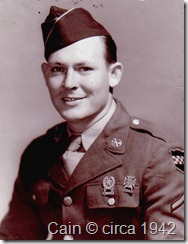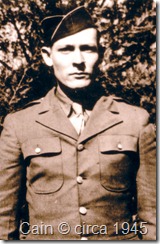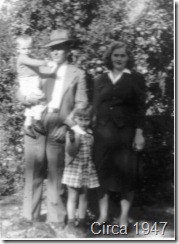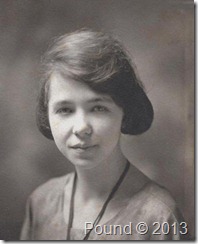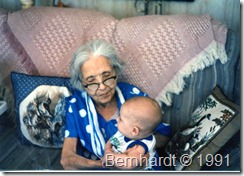Family History Writing Challenge, day six +Lynn Palermo
(Author’s note: Up to this point much of the narrative for the Family History Writing Challenge has been anecdotal information provided by personal accounts of family members and supported by historical documentation. As we move into time periods that living family was not a part of, the narrative will be primarily based on information that has been inferred from historical documentation and writings of that time. As this is a narrative writing for personal use, while they exist, no citations have been included.)
Franz J Bernhardt, Jr. and Rosina Maier were both of German parentage; he was a first generation American, she a recent immigrant from Württemberg.
Some debate exists as to the birth place of Franz (also known as Frank); census data states he was born in Pennsylvania, but his family apparently returned to Germany in the mid to late 1860’s and no official documentation of his birth has been found. According to family, he was born on December 27, 1865 – his grandson recalls that it was celebrated “two days after Christmas” (although he was likely being humorous when he said this), and this is the day recorded in his death records. His middle initial, J, has been found in numerous places, but never the name itself – however, it’s likely that it was “John”, a name common in many German families.
(Note: A birth record for one “John Francis Bernhardt” exists in Philadelphia. The birth date for this individual is listed as December 17, 1865. Unfortunately, the original has not been viewed to this point, so it’s certainly possible that the information includes transcription errors. A review of this document is expected by Summer of 2013.)
In any case, Franz was an American, living in Philadelphia for most of his life. His was a life surrounded by war – his birth arriving at the close of the American Civil War; he lived through two world wars, as well as conflicts with both Spain and Korea. He was fortunate as he never had to experience these events first hand, but his life – like the lives of all Americans – was undoubtedly touched by them.
What likely affected Franz’s life the most, however, was the loss of his mother when he was 14, the loss of his older sister when he was 13, and the separation from his three younger brothers these deaths caused.
In the mid 1800’s, Philadelphia – like most large cities – was plagued by disease. Poor sanitation measures and poor water storage and transportation made large cities the perfect breeding ground for infectious diseases such as tuberculosis, small pox, diphtheria, and typhoid. These diseases claimed the lives of many poor and struggling immigrants who had come to America with the hope of a better life. Unfortunately, all too often the death of a parent, particularly a mother, resulted in children being housed – in this case, temporarily – in homes for poor children.
Franz, being old enough to work, was able to stay at home with his father, apparently in the role of apprentice tailor, while his brothers – 10, 8, and 6 – were sent to the Western Home for Poor Children in Philadelphia. One can only imagine how difficult this was for the boys – including Franz, who had to live with the knowledge that he was able to stay at home while his brothers were not.
So, while his brothers lived at the school, Franz worked with his father, measuring, cutting, and stitching as he learned the family business. Around 1884, Franz was working as a tailor on his own account, but returned home by 1886, apparently staying there until he married.
Family belief always held that Franz returned to Germany, met and married Rosina, returning to America in the early 1890’s. If census records are to believed, however, Rosina immigrated sometime around 1890, she and Franz marrying around 1893. No travel, immigration, or marriage records have been found as of yet, unfortunately, but by 1893 they had their first child.
Little Frank was born in December 1893. His life was short, however, and he passed away two months before the birth of his sister, Francis Rose. Francis was born in November 1894, and she too died young, barely eight months old, in July of 1895. This was surely a difficult time for the newly immigrated Rosina – separated from the life she had always known, possibly struggling to deal with these losses with little to no emotional support system available to her.
Even so, the family grew, and Franz and Rosina had four more children – two boys and two girls, Franz continuing to support his family as a tailor. By 1920, Franz had saved enough money to purchase his family a home at 840 Magee Avenue in Philadelphia – a home he also worked out of for many years.
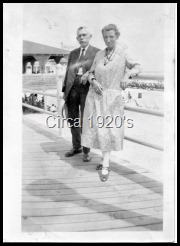
Unfortunately, Rosina passed away in September of 1929, before she could know her grandchildren. Little is known about her life in America, and nothing is known about her parentage or family in Germany.
Franz made it through the Great Depression, as well as the Prohibition era (something he likely wasn’t fond of, as a letter to his son, Al, specifically asked for him to be sent some “corn”.) He was also fond of Bayerisch kraut, expressing his thanks to his daughter-in-law for making him some on his visit to their home.
Franz retired from the tailor business by 1940 – his grandson, Frank, has intimated that his business was being extorted by the mafia – but he may just have run out of money. He still lived on Magee Street, however he was a lodger now, living at house number 346. In 1950, he lived with his daughter Kathryn and her husband, Julius, on Longshore Avenue, apparently residing there until his death.
Franz died August 16, 1954 at the ripe old age of 89. He was a member of the Hermann Masonic Lodge, an all German speaking lodge, and Bethany Reformed Church, both in Philadelphia.
Despite his losses, and the occasional family strife, Franz’s life should be considered a success. He provided his children with the skills and education they needed to care for themselves and provide for their own families, one of the most important things a father can impart.
Franz J. Bernhardt, Jr. b: 27 Dec 1865 d: 16 Aug 1954
m: 1893
Rosina Maier b: Oct 1873, Germany d: 23 Sep 1929
1. Frank b: circa Dec 1893 d: 16 Sep 1894
2. Francis Rose b: circa Nov 1894 d: 23 Jul 1895
3. William F b: 17 Aug 1896 d: May 1965
4. Albert Frank b: 22 Oct 1902 d: 17 Dec 1988
5. Kathryn R. b: 13 Dec 1905 d: 17 Jan 2002
6. Francis Jesse b: Aug 1908 d: 22 Oct 1999



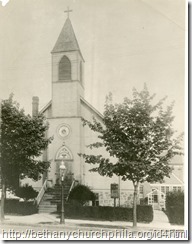
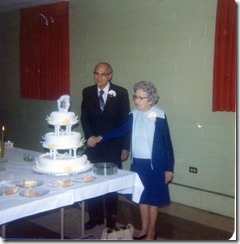
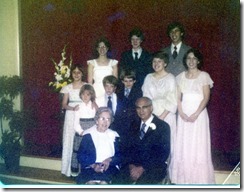
.jpg)

